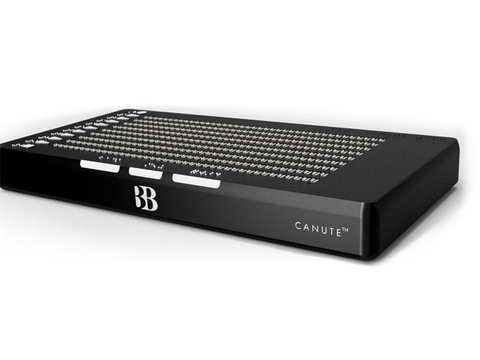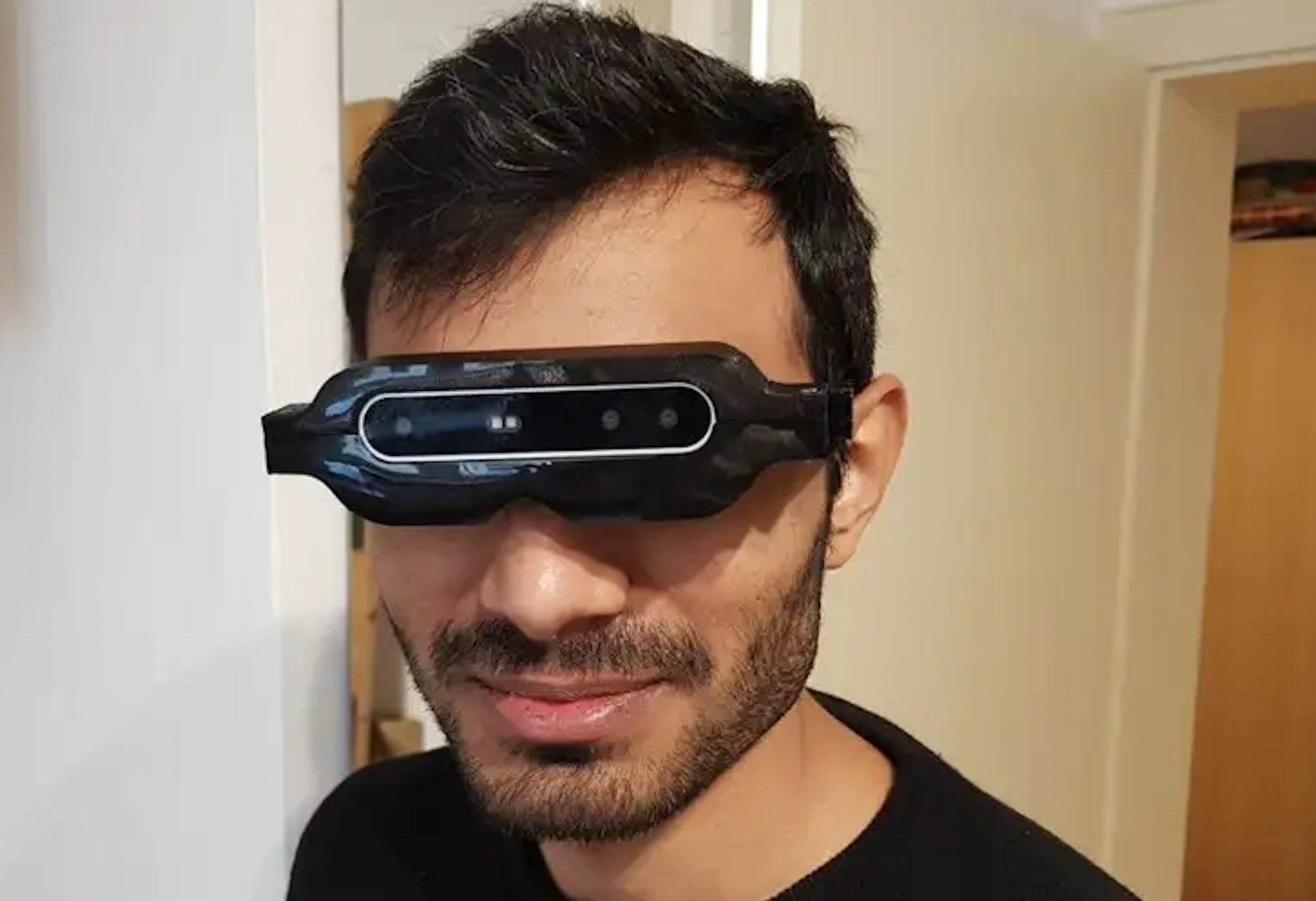Enhancing Lives With Advanced Assistive Tools for the Blind
The integration of advanced assistive gadgets for the blind is transforming how individuals experience their surroundings and connect with their neighborhoods. What does this development indicate for the future of assistive technology and its function in equipping individuals?
Introduction of Assistive Instruments
Assistive gadgets for the blind incorporate a diverse series of devices and technologies developed to boost freedom and boost the top quality of life for individuals with visual problems. These gadgets accommodate different needs, from navigation and wheelchair to interaction and everyday job monitoring.
One of the key categories of assistive devices includes wheelchair help, such as white walking sticks and guide canines, which assist users navigate their environments safely. Digital travel help, equipped with sensors and audio comments, likewise play a significant duty in flexibility improvement.
Furthermore, devices that assist with day-to-day living activities, such as adaptive cooking area devices, Braille tags, and chatting watches, encourage individuals to execute jobs independently. Interaction help, consisting of display visitors and Braille display screens, assist in access to information and allow people to involve successfully with the digital world.
Additionally, low-tech options like amplifying glasses and large-print products continue to be essential for many users. Jointly, these assistive tools offer not just as sensible devices yet also as important enablers of freedom, cultivating greater participation in a world that commonly prioritizes sighted experiences. Their integration right into day-to-day life is crucial for advertising inclusivity and improving overall wellness for those with aesthetic problems.
Ingenious Technologies being used
Technology in technology has actually dramatically transformed the landscape of tools readily available for people with aesthetic impairments. Amongst the most significant developments are smart glasses incorporated with increased reality, which give real-time navigating assistance and item acknowledgment. These tools leverage progressed video cameras and expert system to supply acoustic hints, boosting the individual's spatial understanding and freedom.
Furthermore, mobile applications have arised as powerful sources, allowing customers to determine currency, reviewed message out loud, and browse strange atmospheres via spoken directions. Devices such as Braille displays and refreshable Braille tools remain to evolve, providing smooth connectivity with smart devices and computers, thus enhancing interaction and accessibility to information.
Wearable modern technology, consisting of smartwatches geared up with voice-activated functions, further encourages customers by helping with fast access to notifications and informs without needing aesthetic engagement. Responsive maps and 3D printing are additionally obtaining grip, using concrete depictions of areas that help in orientation and wheelchair training.
Collectively, these ingenious innovations not just enhance the daily lives of aesthetically impaired people but also foster higher freedom, inclusivity, and interaction with the wider community, therefore reshaping understandings of access. (Assistive technology for the blind)
Individual Stories of Empowerment
Empowerment often arises from individual experiences that highlight the transformative effect of technology on people with aesthetic disabilities. Take, as an example, the tale of Sarah, a young artist that restored her interest for paint via the usage of a wise walking stick equipped with barrier discovery. This gadget not just facilitated her flexibility yet instilled a newly found confidence, permitting her to navigate public spaces individually and seek her imaginative undertakings.

These stories underscore the profound results that advanced assistive devices can carry every day life. By making it possible for people to get rid of barriers, innovation cultivates a sense of freedom and self-worth. Such empowerment tales work as a testimony to the possibility of innovation, showing just how the right devices can dramatically improve lifestyle and open doors to new opportunities for those with aesthetic problems.
Benefits of Advanced Solutions
The combination of sophisticated modern technology into assistive devices considerably changes daily experiences for those affected by vision loss. Smart glasses for the visually impaired. Tools such as wise walking sticks equipped with sensing units, navigating apps, and wearable technology are developed to give real-time comments, improving spatial recognition and lowering the dangers associated with mobility.
Furthermore, advanced assistive modern technologies foster social addition by promoting interaction and communication. Voice-activated devices and apps enable people to accessibility info and involve with their surroundings individually, damaging obstacles that formerly prevented their participation in academic, expert, and social setups.
On top of that, the personalization and flexibility of these options deal with the varied demands of users, consequently boosting their overall high quality of life. Enhanced functionality, such as object acknowledgment and text-to-speech capacities, equips people with visual disabilities to do jobs that they might have as soon as discovered testing. Inevitably, advanced assistive innovations not just enhance self-reliance and safety however likewise promote dignity and self-respect, allowing customers to lead fulfilling lives.
Future Patterns in Assistive Technology
As modern technology proceeds to advance, the landscape of assistive gadgets for the blind is poised for exceptional developments that will further enhance access and freedom. Arising fads in assistive technology show a change toward increased assimilation of expert system (AI) and artificial intelligence, making it possible for tools to adjust to private customer needs in real-time. These technologies are expected to promote more instinctive navigating systems that can identify challenges and provide audio feedback, dramatically improving exterior wheelchair.
In addition, the growth of wearable technology, such as smart glasses geared up with enhanced truth, will permit individuals to get contextual details concerning their environments, thereby enhancing their spatial navigate here understanding. Furthermore, innovations in haptic innovation guarantee to produce responsive responses gadgets, permitting users to regard info with touch, improving discovering and interaction with their atmosphere.
Telecommunication breakthroughs are also leading the way for remote help solutions, where experienced specialists can provide guidance by means of video clip phone calls, making certain support is readily available. As these fads unravel, the future of assistive gadgets for the blind will undoubtedly cultivate greater glasses shop freedom, encouraging people to navigate their world with self-confidence and convenience.

Verdict
The integration of advanced assistive tools for the blind represents a significant innovation in cultivating self-reliance and improving quality of life. By utilizing innovative modern technologies, these devices equip users to navigate their settings with better self-confidence and autonomy. As the field remains to evolve, ongoing r & d will likely produce much more innovative solutions, even more changing the lived experiences of people with aesthetic problems and advertising a higher sense of inclusion within culture.
The integration of advanced assistive tools for the blind is changing just how people experience their surroundings and engage with their communities. The integration of cutting-edge technology right into assistive gadgets significantly transforms everyday experiences for those affected by vision loss.As innovation continues to advance, the landscape of assistive devices for the blind is poised for amazing advancements that will certainly additionally boost ease of access and self-reliance. Arising trends in assistive technology indicate a shift towards raised integration of fabricated knowledge (AI) and machine learning, allowing devices to adjust to individual customer needs in real-time.The integration of innovative assistive devices for the blind represents a considerable advancement in fostering independence and improving high quality of life.